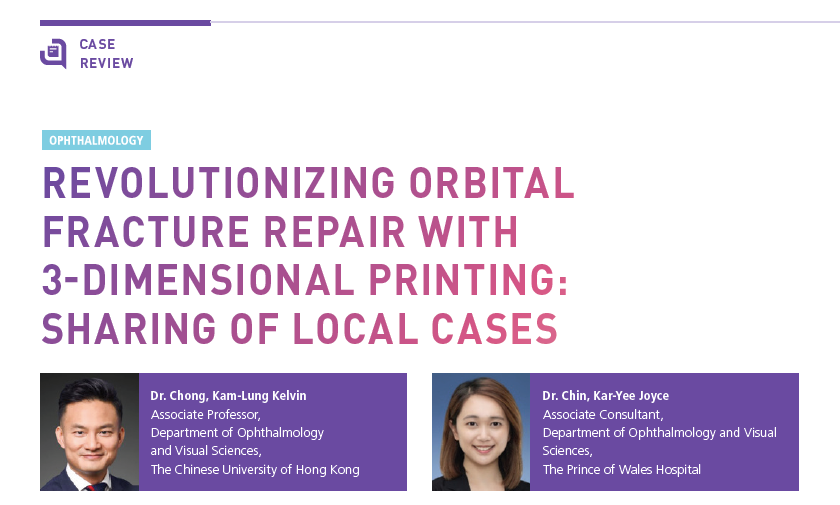Orbital reconstruction remains a challenging and complex procedure due to the intricacy and delicacy of orbital structures and the limited view and access of bony defect.
To address the limitations of traditional CT imaging and manual molding of implant and instrument intraoperatively, our Associate Professor, Dr. Kelvin Chong proposed “3D-printing for surgical instrument and orbital molds (3SIOM)” as an innovative technique that leverages conventional 2D CT imaging and novel 3D printing to improve efficacy and safety of orbital fracture repair. (Information supplemented by Dr. Joyce Chin)
The performance of 3SIOM was investigated in a pilot study (supported by Innovation and Technology Commission) that explored the application of additive manufacturing based on semi-automated image segmentation and endoscopy in assisting unilateral orbital reconstruction.10 Patients who had post-trauma orbital fracture with primary or down-gaze diplopia, ≥2mm enophthalmos, persistent infraorbital numbness and >50% orbital wall involvement were included.
Among the 10 patients who underwent 3SIOM-assisted large orbital fracture repair or orbital reconstruction, the preoperative chair-time on image segmentation by software engineers was only 4-6 minutes using 3SIOM’s semi-automatic software-programmed segmentation process. Compared to the standard manual segmentation process which took an average of 4-6 hours, 3SIOM had significantly reduced the time needed for CT image segmentation per case (p<0.01).
The full interview can be downloaded at here.


 Creative Commons Attribution-NonCommercial-NoDerivs
Creative Commons Attribution-NonCommercial-NoDerivs